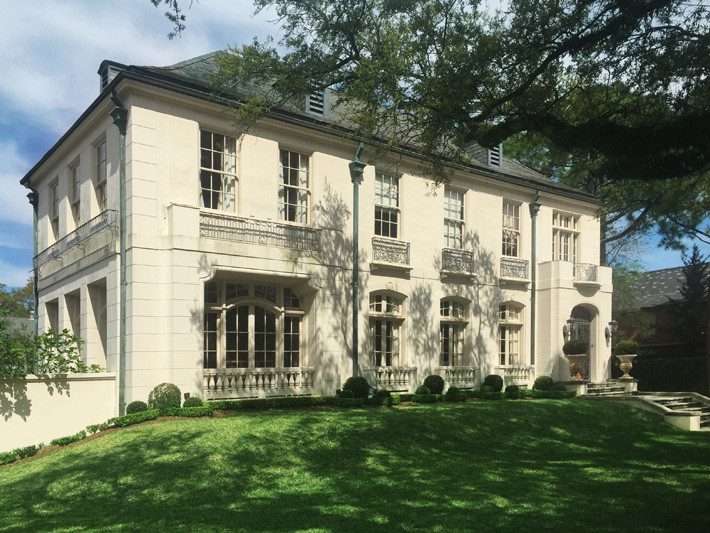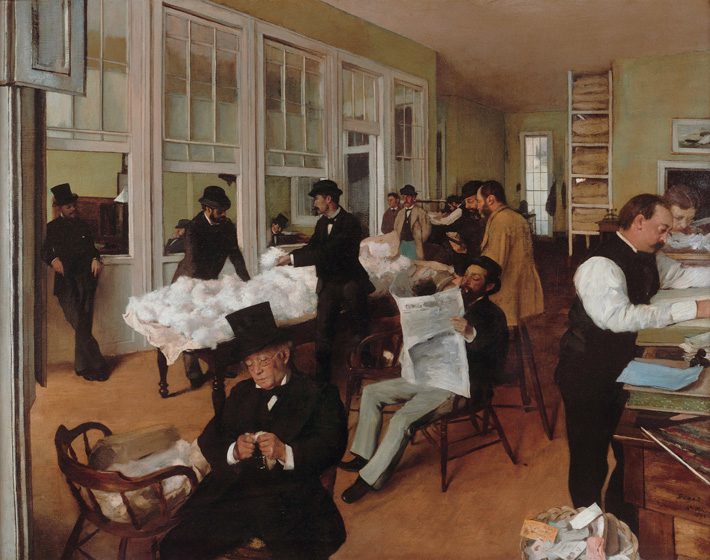Wood windows contribute a great deal to the character and visual appearance of historic buildings, especially houses. To appreciate the ways windows effect how a historic house looks and functions, it is important to understand the different types and features of windows common in New Orleans. Knowing these things can help you maintain or restore your home in ways that enhance its character and value.
Wood windows can be categorized by type, such as casement or sash windows, and other characteristics such as how many lites or panes of glass they have. Each style and historic period has different types and styles of windows associated with them.
The following describes three types of windows most commonly seen in New Orleans:
- Casement window: Operable windows that swing out from hinges on their sides from a frame, usually in a pair.
- Sash windows: Operable windows that have sashes that slide vertically up and down within a frame. Single-hung windows have one moveable sash and one fixed sash, while double-hung windows have two moveable sashes.
- Fixed window: A window that is not operable and is not designed to open, and so is “fixed” in place.
Within each window are a pattern of lites, which are panes of glass; multiple panes of glass are separated horizontally by mullions and vertically by muntons. For instance, a double hung window with six panes of in the upper sash and nine panes in the lower sash would be described as a “six-over-nine” window, which were common in Italianate style homes. In general, there was a trend in the number of panes reducing over time from many small panes in eighteenth century colonial buildings to a few panes in the late nineteenth century buildings as large pieces of glass become more economical. The trend shifted at the end of the nineteenth century, when certain architecture styles intentionally referenced the past in the design of windows, such Colonial Revival and Queen Anne styles, and used multiple small panes of glass for aesthetic rather than practical reasons. In the early twentieth century, windows of bungalow, craftsman, and eclectic historical revival style houses often had distinctive arrangements of small and large panes in their windows. Whether these patterns of lites were for technical, economic, or aesthetic reasons, they constitute an integral part of the pattern and rhythm of window openings of historic homes.

Wood windows require regular maintenance. Even damaged wood windows can often be repaired or rehabilitated and put back to use. If a historic window has become deteriorated or damaged to the point where it cannot be repaired, then it should be replaced with a comparable window of the same type and with the same size, material, proportions, profiles, and number of lites. Windows should also be properly maintained so they can be fully functional, and also kept weather-proof to prevent unwanted water and air intrusions into your home. Historic double hung windows can be restored so that their mechanisms allow smooth operation again.
Architectural salvage yards may have period wood windows with the same dimensions and pattern of lites, and are worth exploring if you need to replace historic wood windows. Alternatively, there are local woodworking shops that specialize in historic windows and doors and are capable of fabricating new windows that match historic ones. If using all wood windows for the replacement of existing windows becomes cost-prohibitive, then wood windows should be used to replace at least existing windows visible on the front of the building. Alternative material windows such as vinyl and metal should only be used were less visible to the street, such as the sides and rear of a building. Additionally, if a building has (or there is evidence that the building originally had) operable wood shutters, then the same kind of shutters should be put in place, such as louvered shutters. Inoperable or incongruous replacement shutters should not be installed on a historic home. Shutters compliment the overall appearance of a historic building and should be maintained. The simple creole cottage pictured below was built on St. Philip Street in 1805 by Jean-Louis Dolliole, a master builder and free person of color, and restored by Frank and Ann Masson in the 1980s; its solid wood shutters are typical of creole structures of the time.
When renovating your home, you may need to have an architectural review by the Historic District Landmarks Commission or the Vieux Carr Commission if your home is located within a historic district in New Orleans. Any changes to the windows, whether to restore or replace, may need to be approved by them. In some cases, a home owner may also be required to replace existing windows that are incompatible with the original period and style of the building.
Over the life of a building, it is not uncommon for some windows in a structure to be replaced, so you may need to do some research to determine if all your windows are in keeping with the original appearance and character of your historic home. When a structure has had some or all of its windows replaced with windows that differ from the original type, style, or size, the impact on its appearance can range from subtle to very obvious.
Replacing wood windows with aluminum or vinyl windows, even when keeping the same dimensions and the same number of lites, can flatten or simplify the look of the window openings in unsatisfying way. Reducing the number of lites can make the façade of a building look bare or incomplete, especially for smaller, humbler dwellings. Replacement windows that match either the existing historic windows or replace incompatible windows with more period and style appropriate windows helps maintain the character of the dwelling and also of your historic neighborhood. When done properly, the maintenance or restoration of your wood windows can preserve not only historic qualities but also the property value of your home.
See also the following for more information:
- Vieux Carr Commission and Dominique M. Hawkins. Guidelines for Windows & Doors. New Orleans: Vieux Carr Commission, City of New Orleans. August 2015. <http://www.nola.gov/getattachment/VCC/Design-Guidelines/VCC-07_WindowsDoors_2015-08_FINAL.PDF/>
- Historic District Landmarks Commission and Dominique M. Hawkins. Guidelines for Windows and Doors. New Orleans: Historic District Landmarks Commission, City of New Orleans. April 2015. <http://www.nola.gov/hdlc/documents/08_windows-doors_2015-04-24/>
- John H. Myers. “Preservation Brief No. 9: The Repair of historic wooden windows.” Washington DC: National Park Service, Technical Preservation Services. 1981. <https://www.nps.gov/tps/how-to-preserve/briefs/9-wooden-windows.htm>
- Vieux Carr Commission and Dominique M. Hawkins. Guidelines for Exterior Painting. New Orleans: Vieux Carr Commission, City of New Orleans. August 2015. <http://www.nola.gov/getattachment/VCC/Design-Guidelines/VCC-09_ExteriorPaint_2015-08_FINAL.PDF/>
- Kay D. Weeks and David W. Look. Preservation Brief No. 10: Exterior Paint Problems on Historic Woodwork. ashington DC: National Park Service, Technical Preservation Services. September 1982. <https://www.nps.gov/tps/how-to-preserve/briefs/10-paint-problems.htm>
Image Credits: Wndows in French Quarter and Marigny, photographs by Scott Heath, used with permission. French beaux arts style home, photograph by Scott Heath, used with permission. Spanish colonial cottage on St. Philip Street restored by Frank and Ann Masson, photograph by Scott Heath, used with permission. Painting of cotton exchange in New Orleans by Edgar Degas, Wikimedia.





